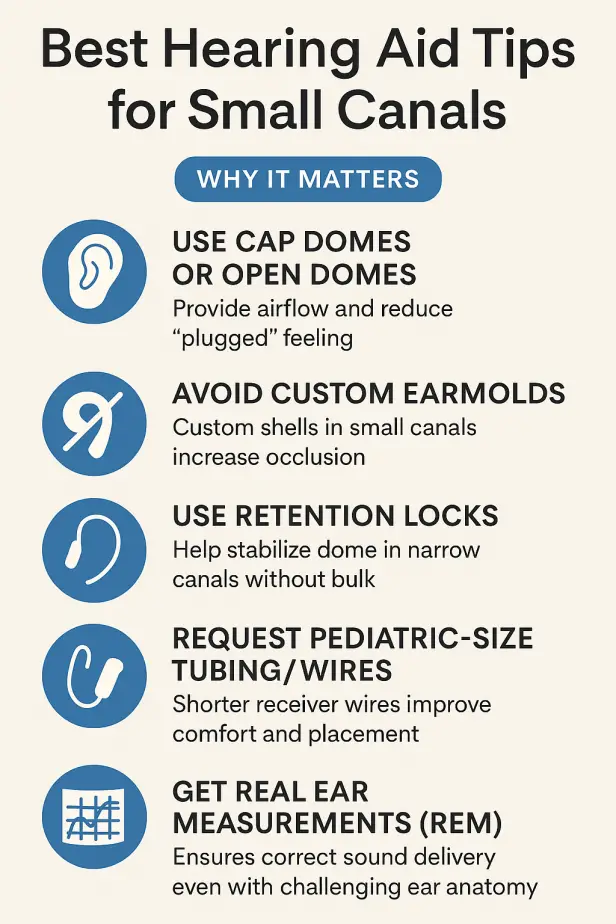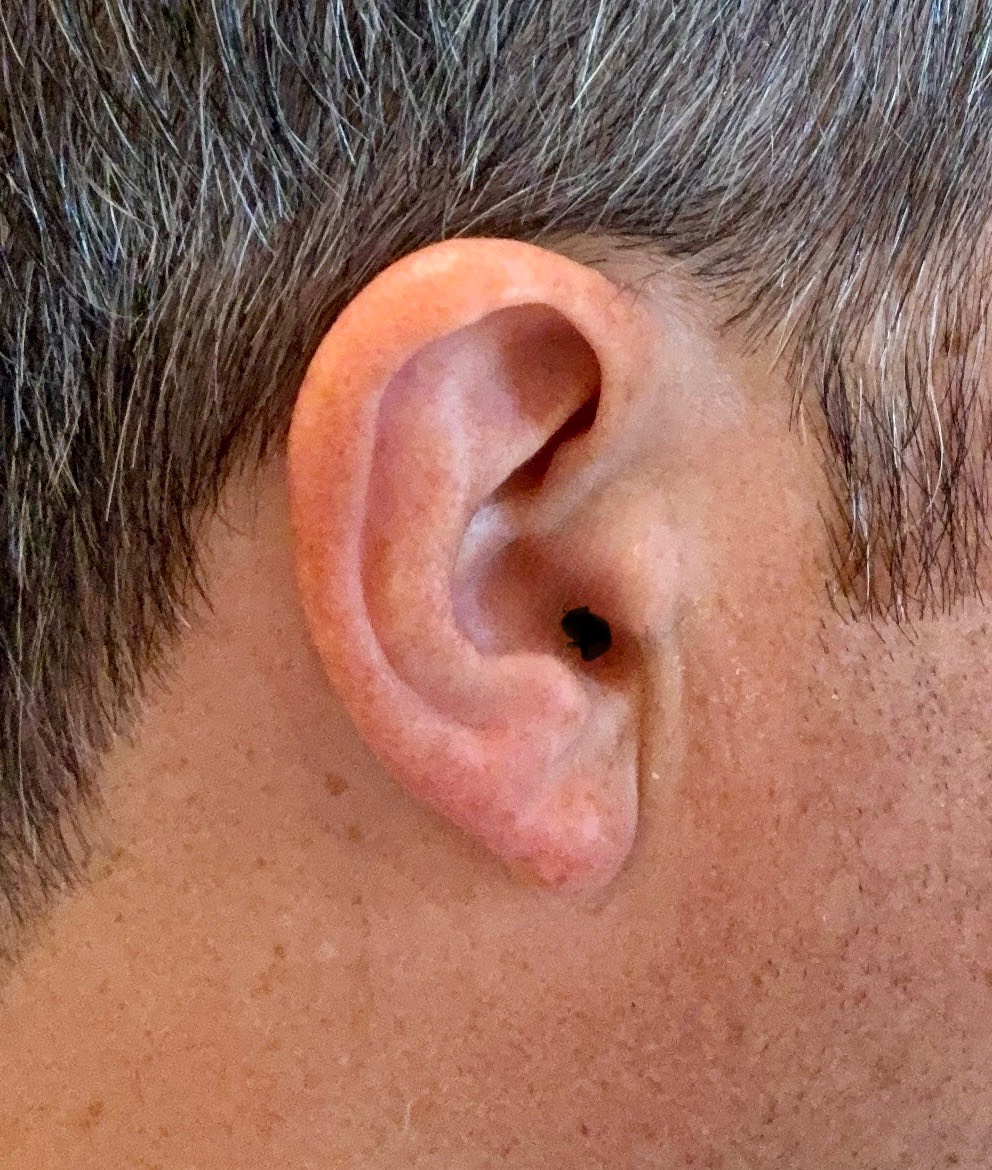For individuals with small ear canals, finding a comfortable, effective hearing aid can be a challenge. Many hearing aids are simply too large, causing discomfort, poor retention, or feedback. Fortunately, modern receiver-in-canal (RIC) hearing aids with slim profiles and ultra-small domes provide the perfect solution.
This guide focuses on the best hearing aid options and strategies for those with small or narrow ear canals—helping you choose a device that fits well, sounds great, and feels comfortable all day.

Why Small Ear Canals Require Special Consideration
Small or narrow ear canals affect fit, comfort, and hearing aid performance. Common issues include:
- Discomfort or pressure
- Dome slippage or poor seal
- Whistling or feedback
- Muffled or “boomy” sound from occlusion
The solution? Choose hearing aids that are:
- Physically small and lightweight
- Compatible with open, soft, or cap-style domes
- Customizable to match canal angle and depth
The Best Style: Receiver-in-Canal (RIC)
RIC hearing aids are the best choice for small ear canals. They place the receiver (speaker) in the ear canal, connected by a thin wire to the main body of the hearing aid behind the ear. This design allows maximum flexibility in ear tip size and shape.
Why RICs Are Ideal for Small Ears:
- Fit with tiny domes or cap domes
- Better ventilation to reduce occlusion
- Easier to insert and remove
- Compatible with advanced sound processing and Bluetooth
❌ What to Avoid
| Style | Why Not Recommended |
|---|---|
| Custom ITE or CIC | Will often appear larger and more visible in small ears |
| IIC (Invisible-in-Canal) | Often not possible due to size and bend of the canal |
| Custom Molds | More occlusion, less airflow, higher risk of feedback |
Recommended Hearing Aids for Small Ear Canals
1. Phonak Audéo Infinio L90 Sphere
- Why it’s great: Phonak’s Sphere model allows for discreet wear with excellent sound quality. The L90 is their premium model with rich automatic processing.
- Features: AutoSense OS 5.0, Bluetooth, hands-free calling, rechargeable or disposable battery options.
- Pro Tip: Use a cap dome or extra small open dome. Avoid custom molds to reduce occlusion.
- Note: The Slim design only affects the behind-the-ear housing—it does not improve fit in the ear canal.
2. Oticon Intent
- Why it’s great: Oticon’s newest RIC features a refined casing and new 4D sensors for more precise environmental awareness.
- Features: Deep neural network sound processing, Bluetooth LE Audio (Auracast-ready), rechargeable battery.
- Pro Tip: Pair with Oticon open dome 6mm or cap dome. Avoid double domes or custom molds for small canals.
Key Fitting Tips for Small Ear Canals
| Tip | Why It Matters |
|---|---|
| Use cap domes or open domes | Provide airflow and reduce “plugged” feeling |
| Avoid custom earmolds | Custom shells in small canals increase occlusion |
| Use retention locks | Help stabilize dome in narrow canals without bulk |
| Request pediatric-size tubing/wires | Shorter receiver wires improve comfort and placement |
| Get Real Ear Measurements (REM) | Ensures correct sound delivery even with challenging ear anatomy |
Final Thoughts
If you have small ear canals, don’t settle for discomfort or poor sound quality. Receiver-in-canal (RIC) hearing aids are the most versatile and comfortable solution, especially when paired with small domes or cap-style ear tips. Skip the custom-molded options and IIC/CIC styles—they often create more problems than they solve.
Talk to your audiologist about Phonak Audéo I90 Sphere or Oticon Intent—both offer excellent sound quality and advanced features in a form factor that works for your ears.

